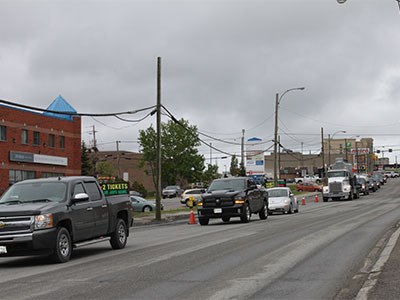After killing it off two years ago, Queen’s Park has resurrected the Connecting Links Program to provide municipalities with much-needed funding for main arterial roads that double as provincial highways.
In an April 20 release, the province announced $15 million will be set aside annually to help municipalities pay for construction costs and repairs to these roads and border crossings.
No details were revealed about where money will be spent, but a government news release listed 21 communities across the North, from Mattawa to Fort Frances, that appear to be eligible for funding.
The province said more details will emerge after consultation with individual municipalities.
In an interview with Northern Ontario Business earlier this year, Timmins Mayor Steve Black said Premier Kathleen Wynne admitted at the Good Roads Association annual conference in February that the province had made a mistake in removing the Connecting Link funding in 2013.
Timmins is facing a potential $30-million resurfacing and infrastructure repair job on a section of Algonquin Avenue, which is also designated as provincial Highway 101.
There was some criticism surrounding the inconsistency and inadequacies in the previous program’s funding formula, leaving municipal taxpayers to pay for the bulk of repairs to the city’s main east-west corridor.
“Municipalities told us they wanted our government to introduce a new Connecting Links program, and we listened,” said Brad Duguid, Minister of Economic Development, Employment and Infrastructure in a statement.
With the Wynne government set to deliver its budget April 23, the government has preempted itself by announcing its Moving Ontario Forward plan that will set aside a $31.5-billion pool to spend on “priority infrastructure projects” over the next decade, including light-rail transit in the Greater Toronto Area.




